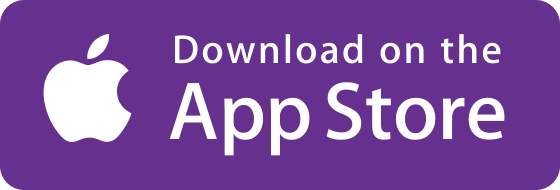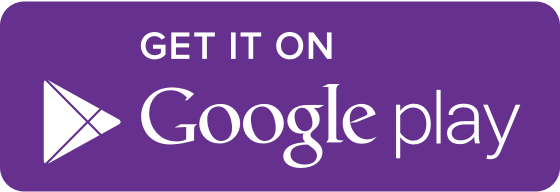Maryanne Wolf suggests a new pedagogical project to save deep reading. Print and digital media together, for a bi-literate reading brain.
A lot has already been written and said about Maryanne Wolf’s last book Reader, Come Home: The Reading Brain in a Digital World, (Harper Collins, New York, 2018). Her essay represents a heartfelt appeal in an epistolary form, passionately argued and rich in references to the results of a ten-year neuroscientific research on reading. Wolf, who directs the Centre for Dyslexia at UCLA Graduate School of Education and Information Studies, invites to reflect on the dangers that a total immersion in the digital ecosystem may entail for our cognitive processes. What is at stake are empathy, imagination and critical thinking, namely those dimensions that define and are typical of the so-called “deep reading”. Wolf’s concerns do not differ much from those raised by dozens of European researchers in the recent Stavanger Declaration.
Here, we would like to focus on the pars construens of the book, which tries to address the digital change challenge and to formulate a proposal that is at once pedagogical, philosophical and political. For Wolf, we need to develop a «bi-literate reading brain», i.e. able to focus on deep reading processes as well as to move quickly from an interesting content to another. In other terms, a brain that is able to work both digitally and analogically
The idea of the bi-literate reading brain has been developed in the field of neuroscience applied to reading since 2014. It is based on two fundamental assumptions.
We were never born to read
The first assumption refers to the fact that reading is neither a natural attitude nor an innate process, but a cultural invention. In order to be able to read, we make our brain work differently than it was genetically planned. «Human beings were never born to read» Wolf has already reminded us in her previous book Proust and the Squid. The Story and Science of the Reading Brain, (Icon Books, Cambridge, 2008). And Stanislas Dehaene had explained it even before, not without arising some controversies, in his fundamental essay Reading in the Brain. The New Science of How We Read (New York, Penguin, 2009).
The second assumption is that of «bounded plasticity». It is true that our brain is able to go beyond its original functions, building new connections and new pathways, and thus recycling aspects of its basic structures (Dahene speaks in fact of neuronal recycling). However, such plasticity cannot exceed certain limits. Our brain is not a clean slate, able to receive any input and adapt to doing anything. It adapts itself within the boundaries of its biology.
In what sense, then, do we speak of a bi-literate reading brain? If the reading brain circuit is malleable, i.e. influenced by what we read, how we read and how we were educated to read, then education becomes precisely one of the key factors to change the reading brain behaviour. And this has been valid – Wolf underlines – since our early years. The goal is to create readers who are able to shift flexibly from one code to the other (from the analogical one to the digital one, and vice versa), taking advantage of both. This «should prevent the atrophy seen in adults when screen-reading processes bleed over into print reading and eclipse the slower print-reading processes». The conditional tense is necessary, since Wolf herself speaks of an «unproven hypothesis».
Educating to reading: print first
Wolf basically suggests to introduce different forms of reading, based on print and digital texts, in the five- to ten-year age period. Before five, children should be kept away from digital devices as much as possible. In these early stages, the role of printed books must prevail, so to strengthen the peculiar spatial and temporal dimensions of reading:
During the initial introduction to print reading, we want children to learn that reading takes time and gives back thoughts that continue long after a story is finished. […] Through this five- to ten-year age period, the goal is to instill in children the expectation that if they take their time, they will have their own ideas.
The time issue is key. In the digital ecosystem, our brain tends to be overloaded with information. It was estimated that an adult American has to process 34 GB of information a day on average, equal to some 100K words (Roger E. Bohn, James Short, Measuring Consumer Information, in “International Journal of Communication”, 6, 2012, pp. 980–1000). Such overload is usually addressed in three ways: simplifying; processing information faster, through “rapid-fire” reading; following priorities. The experience of deep reading is given up in favour of behaviours that are more suitable to this time-management need. Hence, skimming, skipping and browsing.
Equally important is the relation with the physical dimension of writing, of the text and, therefore, of the device used for reading. Learning to write by hand is a way to explore one’s reasoning with no pressure, thus improving not only writing but thinking, as well.
Finally, there’s the issue of educating to coding. Coding should be a new form of literacy, accessible to all. While children learn to read and think through the most appropriate tool, i.e. print, they have to get in touch with different tools, which are introduced to learn digital creative skills: graphics and software programming. Since programming helps to organise one’s own thinking, just as writing and reading do.
Time, concentration and a taste for beauty
Till ten-year age, print and digital should have equal space in the educational context. None of them should prevail on the other. After their tenth year, children should have learned a lot, thanks to the use of different tools, each with its own specific role. They will then be ready to read more school texts on digital screens:
The ultimate goal in this plan is to develop a truly bi-literate brain with the capacity to allocate time and attention to deep-reading skills regardless of medium. Deep-reading skills not only provide critical antidotes to the negative effects of digital culture, like the diffusion of attention and the attrition of empathy, but also complement positive digital influences.
Wolf summarises her project in a formula: shifting from tldr (too long; didn’t read) to arcia / tL (attend, remember, connect, infer, analyze / then LEAP!). We do not know if the educational model suggested by the American scholar is sufficient to contain the extremes of reading in the digital ecosystem. What is certain is that losing the ability of applying deep reading to complex texts will represent a really serious cultural involution.
Difficult reads, we know, pose a threefold challenge: 1) they require to dedicate time and attention, in order to decode the various layers of meaning in the text; 2) they impose to carry out a complex analysis; 3) they presuppose the ability to perceive beauty behind the precision and refinement of writing. Wolf suggests that there might be a way to learn how to meet these three challenges, recovering time, concentration and the taste for beauty.
Paolo Costa


